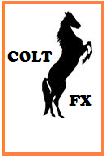Forecast
EUR/USD: support @ 1.3075; resistance @ 1.35
GBP/USD: support @ 1.42; resistance @1.4450
USD/JPY: support @ 96.50; resistance @ 99.50
Calendar Notes
Next week’s ECB interest rate announcement and the US NFP are always big talking points and we have the added spice of the G20 summit in London on Thursday. As things stand at the moment, it seems unlikely that anything new will come out of the meeting, but there should be more detail on plans to boost the IMF’s bail-out fund.
US Treasury Secretary Tim Geithner will be speaking today (Sunday 29th) at 22.30 GMT. If recent appearances are anything to go by, there could well be fireworks. ECB President Jean-Claude Trichet will be testifying to the European Parliament in Brussels on Monday (14:30). On Friday, Fed Chairman Ben Bernanke rounds the week off with a speech entitled “The Fed’s Balance Sheet’ (Friday 16:00).
Economic Data (My comments in italics)
US Dollar
Economic Health: Chicago PMI (Tuesday 13:45); ISM Manufacturing PMI (Wednesday 13:45); ISM Non-Manufacturing PMI (Friday 14:00). The Purchasing Managers Index (PMI) is one of the best indicators of economic health.
Housing: Pending Home sales (Wednesday 14:00). Will US housing data continue to show improvement?
Jobs: ADP Non-Farm Unemployment Change (Wednesday 12:15); US Non-Farm Payrolls (Friday 12:30); US Unemployment Rate (Friday 12:30). Wednesday’s ADP data sets expectations for Friday’s big numbers.
Consumer Confidence: Conference Board (Tuesday 14:00). Are things looking up for the US consumer?
Euro
Economic Health: German Retail Sales (Wednesday 06:00); Final Manufacturing PMI (Wednesday 08:00); Final Services PMI (Friday 08:30) The Purchasing Managers Index (PMI) is one of the best indicators of economic health.
Inflation: CPI Flash Estimate (Tuesday 09:00). Early inflation news from the European front
Monetary Policy: ECB Interest Rate Announcement (Thursday 11:45); Follow-up Press Conference (Thursday 12:00) ECB expected to cut to 1.0%, but it’s the press conference that has the potential to really move the market.
UK Pound
Economic Health: Manufacturing PMI (Wednesday 08:30); Services PMI (Friday 08:30) The Purchasing Managers Index (PMI) is one of the best indicators of economic health.
Consumer Confidence: GfK (Monday 23:01) I am slightly surprised that economic analysts expect this to hold steady
Yen
Jobs: Unemployment Rate (Monday 23:30)
Economic Health: Tankan Manufacturing Index (Wednesday 23:50) The situation darkens in the land of the rising sun.
Last week’s Action:
The week opened with the greenback losing ground against the euro but after rising to test resistance at 1.37 on Monday morning, it was downhill all the way for the pair. Monday midday saw US Treasury Secretary Tim Geithner unveil plans to use both public and private sources to make a further $1 trillion available to buy toxic assets from US banks. This last-ditch attempt to avoid nationalization and the markets loved it, with the S&P 500 rising 7%, the biggest advance for the index since Obama became president. After testing support at 1.35, the euro followed equities up and hit resistance at 1.3650 before starting to fall once more on Tuesday morning. Bad news and dispiriting forecasts out of Europe saw the pair on its way to test support at 1.35 and went on down to 1.3450 during US trading. Wednesday saw the dollar take a dive when Tim Geithner made the headlines again after casting doubt in an off-the-cuff comment on the role of the dollar as the world’s dominant reserve currency. The US enjoyed a week of not too disheartening economic data. The all-important housing sector turned in good news in the shape of new and existing home sales and the House Price Index all coming in better than expected; Durable Goods Orders surveyed its first rise in 7 months; and, although GDP was revised down, it did come in less bad than expected. EUR/USD kept banging away at support at 1.35 which it finally broke down a few hours into European trading on Friday. European Industrial New Orders in January slumped 34% compared with orders in January 2008 and were 3.4% down from December 2008. German Finance Minister Peer Steinbrueck compounded euro-misery when he noted that the single currency could be at risk if euro-zone members didn’t start taking the ECB Stability and Growth Pact seriously. EUR/USD bombed to 1.33 in a couple of hours and closed the week at 1.3282.
Sterling spent the first two days of the trading week on the up against the dollar, hitting the week’s high of 1.4774, midway through US trading on Tuesday. The pair started the fall when the Governor of the Bank of England, Mervyn King, warned that Britain simply couldn’t afford another round of fiscal stimulus. Wednesday’s failed UK bond auction fuelled sterling’s decline, which continued through the rest of the week with the pair breaking down support at 1.45 on Thursday. The UK’s Q4 GDP was revised down to a final -1.6% on Friday, and cable broke through 1.44, to test support at 1.43 in a couple of hours. The pair closed the week at 1.4316.











